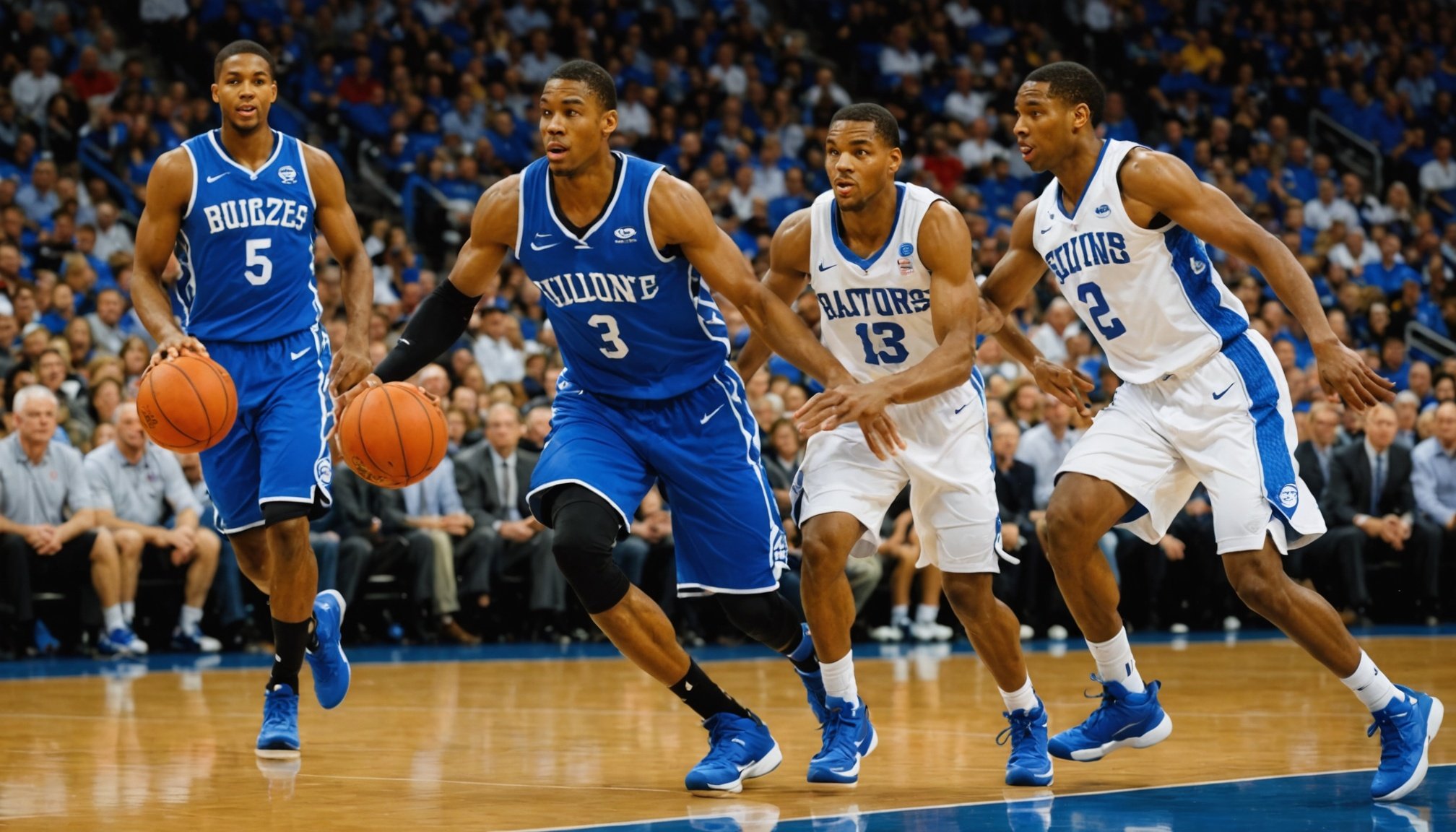Understanding Opponent Strategies
Gaining an edge in competitive games often hinges on opponent analysis. By examining past games and opponent tendencies, teams can unveil patterns crucial for their own game strategies. These patterns include preferred plays, repeat mistakes, and even psychological vulnerabilities.
A deeper dive into raw data is invaluable. Analyzing statistical data and player performance metrics can highlight strengths and weaknesses. Observing elements like success rates, defensive errors, and scoring patterns equips teams with the tactical awareness needed for precision game planning.
In the same genre : How does the culture of basketball differ across countries and regions?
Video analysis is another critical tool for understanding opponents. By reviewing footage, teams can conduct in-depth strategy breakdowns, identifiable missteps and innovative tactics used by opponents. This form of analysis enables a comprehensive preparation, allowing teams to tailor their strategies with precision.
Knowing your adversary’s moves in advance offers a strategic advantage. Thus, leveraging detailed opponent analysis ensures that teams remain one step ahead, transforming potential unknowns into strategic opportunities.
Topic to read : How does playing in different positions affect a player’s development in basketball?
Effective Game Preparation
In the realm of game preparation, understanding your opponent is only the beginning. Effective preparation involves executing specific practice drills that target known weaknesses of opponents, an essential step towards readiness. These drills hone in on areas where an adversary might falter, thus ensuring your team is strategically equipped.
Communication strategies are pivotal during this preparation. Facilitating open channels among team members helps build a cohesive unit, ready to respond to dynamic game situations. This includes establishing clear signals and routines that enhance on-field coordination and reaction.
A well-structured, yet flexible game plan is crucial. Given the unpredictable nature of opponents’ strategies, an adaptable approach allows teams to pivot seamlessly in response to any tactical shifts observed during play. Flexibility grants the capacity to tackle unforeseen challenges and maintain a competitive edge.
Ultimately, integrating these elements into game preparation not only elevates team performance but also instills confidence. A team that transitions smoothly from preparation to execution demonstrates superior tactical training, manifesting its readiness against any opponent with precision and efficiency.
In-Game Decision Making
In the heart of a competitive match, real-time adjustments are pivotal. Recognising the right moments to shift strategies can differentiate between victory and defeat. Game time strategies demand acute situational awareness, enabling teams to respond to evolving circumstances swiftly.
Reading the flow of the game and observing opponent responses provide essential insights. Teams can anticipate potential tactical shifts and adapt accordingly, maintaining a competitive advantage. This responsiveness is not merely about reacting but involves anticipating opponent moves and countering effectively.
Moreover, utilising time-outs offers a strategic pause for strategy recalibration. During these crucial breaks, teams reassess their current tactics, perhaps tweaking formations or reinforcing certain plays based on immediate feedback.
Successful in-game decision making integrates thorough pre-game preparation and spontaneous adaptability. Teams strive to strike the perfect balance, ensuring decisions enhance performance rather than disrupt continuity. The goal is to address unfolding challenges while maintaining tactical coherence. Ultimately, adept decision making empowers teams to seize control in critical moments, capitalising on opportunities that arise during the ebb and flow of play.
Post-Game Analysis
A meticulous performance review is essential after a match. By scrutinising game footage, teams can unveil overlooked details that clarify what strategies succeeded and where there was room for improvement. This analysis sharpens future tactics and refines understanding.
Gathering player insights is also indispensable. This feedback unveils not just the tactical elements but personal aspects of game analysis that could impact future performances. Players often provide nuanced perspectives that statistical data might miss, enriching the team’s strategic arsenal.
Beyond observation, actionable insights drive tangible improvements. Strategies are refined based on comprehensive feedback mechanisms, transforming lessons learned into a robust plan for upcoming matchups. This iterative process involves setting targeted goals, either to rectify weaknesses or enhance strengths, ensuring evolution rather than stagnation.
Lastly, dissecting both personal and team performance promotes a continuous cycle of enhancement. By fostering an environment that values honest evaluation, teams develop a consistent trajectory towards improvement. Such dedication to post-game analysis ensures readiness and adaptability in the face of varied competition, fostering a culture of excellence.
Advanced Tactical Concepts
In competitive sports, embracing tactical innovation can significantly alter the dynamics of a game. Teams striving for an upper hand often explore unconventional approaches. Such strategies, which deviate from traditional norms, can effectively disrupt and unsettle well-established opponent strategies, opening pathways to unforeseen victories.
Incorporating psychological aspects into tactical planning is another layer of complexity that can refine advanced strategies. Understanding the mental state of both teammates and adversaries can guide decisions that exploit psychological vulnerabilities. Thus, the mental game becomes as critical as the physical one, translating to on-field success.
Analysing high-level strategies from successful teams and coaches provides a goldmine of insights. By studying their gameplay and decision-making processes, teams can glean lessons that lead to mindset shifts, fostering a more nuanced understanding of strategic possibilities. This analysis drives strategic growth, enabling teams to evolve beyond conventional methods.
Overall, the adoption of advanced tactical concepts necessitates a commitment to continuous learning and adaptation. Through comprehensive evaluation and the willingness to embrace innovative tactics, teams position themselves to outperform the competition, consistently achieving greater success.
Building a Winning Culture
Embarking on creating a culture of success involves moulding strong team dynamics. This requires fostering a mindset focused on continuous improvement and adaptation. Encouraging an atmosphere where players are invigorated to refine their skills constantly is pivotal in maintaining a competitive edge.
A critical element is open communication. It enhances collaboration among team members, enabling them to share insights and strategies seamlessly. This creates an environment where everyone can contribute, leading to a unified vision and coherent game plan.
Developing mental resilience is equally important. Teams must be prepared to handle pressure and tackle unexpected challenges with poise. This involves nurturing a mentality that views hurdles as opportunities for growth, fortifying the team’s resolve.
To illustrate, teams like those led by exceptional coaches often thrive in uncomfortable situations, turning adversity into triumph. Such teams epitomize a culture where challenges are tackled head-on with grit and strategic acumen.
In summary, cultivating a winning culture revolves around commitment to continual learning, facilitating robust communication, and building unwavering mental tenacity. This strategic foundation enhances both individual and collective performance, ensuring long-term success.











